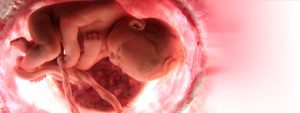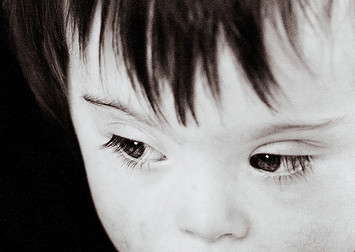Hereditary diseases
 Hereditary diseases are diseases caused by chromosomal and gene mutations. Some confuse hereditary diseases with congenital diseases. Indeed, congenital diseases, that is, diseases with which a child is born, may be hereditary, but they can also be caused by any damaging external influence on the embryo or fetus – an infection, ionizing radiation, a toxic substance. On the other hand, not all hereditary diseases are congenital, as some of them may occur later, even in an adult. The appearance of a hereditary disease does not depend on external causes and is always caused by a pathological mutation.
Hereditary diseases are diseases caused by chromosomal and gene mutations. Some confuse hereditary diseases with congenital diseases. Indeed, congenital diseases, that is, diseases with which a child is born, may be hereditary, but they can also be caused by any damaging external influence on the embryo or fetus – an infection, ionizing radiation, a toxic substance. On the other hand, not all hereditary diseases are congenital, as some of them may occur later, even in an adult. The appearance of a hereditary disease does not depend on external causes and is always caused by a pathological mutation.
There are also diseases with hereditary predisposition. These are diabetes, atherosclerosis, obesity, gastric and duodenal ulcers, etc. They can occur in a person whose relatives suffered from these pathologies under the influence of external influences – malnutrition, lack of movement, severe stress (but this does not mean that such will happen).
Today, medicine knows about five thousand hereditary diseases – genes and chromosomal.
Gene diseases
Most of all hereditary diseases are caused by gene mutations. These include fermentopathies – various metabolic disorders. Enzymes due to gene mutations change their properties or are not produced at all by the body, and as a result, the biochemical reaction in which this enzyme is involved is not carried out.
Such hereditary diseases include phenylketonuria, homocystinuria, albinism, maple syrup disease (altered amino acid metabolism); galactosemia and fructosemia (carbohydrate metabolism disorders); Tay – Sachs disease, plasma lipoidosis (disorders of fat metabolism); Konovalov – Wilson’s disease (metal metabolism); Lesch – Nyhan disease (disturbances in purine metabolism).
Hereditary diseases can pass from generation to generation, such as phenylketonuria. With this disease, the body cannot absorb phenylalanine, the amino acid responsible for the formation of the hormones adrenaline, tyrosine, noradrenaline. As a result, severe damage to the nervous system, manifested by a violation of motor functions, dementia.
Marfan syndrome (arachnodactyly) is a hereditary disease of the connective tissue due to the mutation of the gene responsible for the synthesis of fibrillin. The disease affects the musculoskeletal system, skin, eyes, cardiovascular system. People with Marfan syndrome are thin, tall, have long arms and legs (“spidermen”), they are characterized by dry skin, excessive mobility of the joints, deformities of the spine and chest. They suffer from heart defects, an aortic aneurysm, subluxation of the lens. With intelligence, they are all right. Moreover, such prominent personalities as Abraham Lincoln, Nicola Paganini, Charles de Gaulle, Corney Chukovsky suffered from Marfan syndrome.
Pathological mutations can occur in the process of embryonic development. So, achondroplasia – a violation of bone growth and dwarfism – in 80% of cases caused by a new mutation, while in the family with this disease, no one has ever suffered.
Matrine – Bell syndrome (fragile X chromosome syndrome) is also caused by a gene mutation. The disease is found in childhood and is characterized by mental retardation.
Most hereditary diseases manifest themselves in childhood, but mutations of genes can make themselves known in adulthood. Thus, Alzheimer’s disease, which develops relatively early, at the age of 50, owes its appearance to a gene mutation.
Chromosomal diseases
These diseases are caused by chromosomal and genomic mutations, that is, changes in the structure or number of chromosomes. They usually appear during the formation of germ cells. Often, such mutations lead to miscarriage or the birth of a dead baby, in some cases, the child is born, but is sick.
Chromosomal diseases include all known Down syndrome – there is an extra chromosome in the chromosomal set of such patients. For people with Down syndrome is characterized by a peculiar appearance, mental retardation, reduced resistance to disease.
Shereshevsky – Turner syndrome is a chromosomal disease that affects only women and consists of the absence of one sex chromosome. In such patients, the ovaries are underdeveloped, because of which the external sexual signs are smoothed: they have short stature, broad shoulders, short legs, and a narrow pelvis. A characteristic feature is the skin folds that go from the neck to the neck (the neck of the sphinx). Mental development in these patients remains normal, but they differ in emotional instability. Women with Shereshevsky-Turner syndrome have no menstruation, and they cannot have children.



